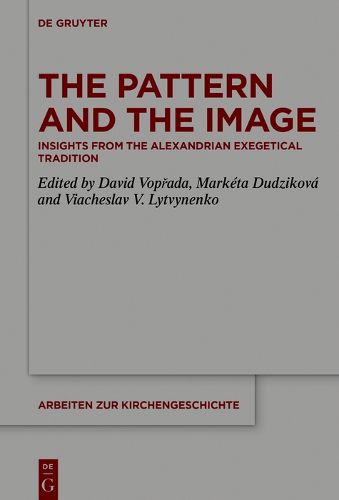Readings Newsletter
Become a Readings Member to make your shopping experience even easier.
Sign in or sign up for free!
You’re not far away from qualifying for FREE standard shipping within Australia
You’ve qualified for FREE standard shipping within Australia
The cart is loading…






One of Plato's best-known ideas is that the sensible world is an image of the intelligible pattern. The book examines the second life of this concept in late antiquity, especially in the Hellenistic Jewish and Christian milieu. It opens with the discussion of the key features of the pattern-image concept in Plato and Plotinus, and then focuses on the adoption of this concept in the works of Philo of Alexandria and the early Christian authors-Clement of Alexandria, Origen, Eusebius, Athanasius, Gregory Nazianzus, Didymus the Blind, Ambrose of Milan, and Pseudo-Athanasius. The collected papers illuminate various aspects of the topic, including the importance of the visible world and art in Platonism, allegorical and Christological interpretations of the biblical account of creation, and relation of the intelligible pattern in the Logos to the world. The authors analyze the Jewish and Christian reinterpretations of the pattern-image structure by looking into the ontological dignity of the image, its similarity and dissimilarity to the pattern, and the mutual chronology of the pattern and the image. Combining theological, philosophical, and philological approaches, the book offers a complex view of the pattern-image relationship in various contexts.
$9.00 standard shipping within Australia
FREE standard shipping within Australia for orders over $100.00
Express & International shipping calculated at checkout
One of Plato's best-known ideas is that the sensible world is an image of the intelligible pattern. The book examines the second life of this concept in late antiquity, especially in the Hellenistic Jewish and Christian milieu. It opens with the discussion of the key features of the pattern-image concept in Plato and Plotinus, and then focuses on the adoption of this concept in the works of Philo of Alexandria and the early Christian authors-Clement of Alexandria, Origen, Eusebius, Athanasius, Gregory Nazianzus, Didymus the Blind, Ambrose of Milan, and Pseudo-Athanasius. The collected papers illuminate various aspects of the topic, including the importance of the visible world and art in Platonism, allegorical and Christological interpretations of the biblical account of creation, and relation of the intelligible pattern in the Logos to the world. The authors analyze the Jewish and Christian reinterpretations of the pattern-image structure by looking into the ontological dignity of the image, its similarity and dissimilarity to the pattern, and the mutual chronology of the pattern and the image. Combining theological, philosophical, and philological approaches, the book offers a complex view of the pattern-image relationship in various contexts.